Vivo X21 review: Successfully makes its mark on design and innovation

For several years, Vivo has been termed as one of the brands that create affordable iPhone knock-offs. While most of that conception could be said as true, the company has been trying hard to ditch that image by focusing their efforts on the camera's performance. Most of their affordable smartphones boast of high-resolution cameras that can compete with some of the best in the market. Lately, it seems that Vivo is done following the trend of the market leaders and is now eyeing to be a step ahead of them. While they are gearing up to unveil the world’s first true all-screen display smartphone (rumoured as the NEX), Vivo has brought the X21 to the Indian market. The X21 is the world’s first smartphone to feature an in-display fingerprint scanner.
Yes, Vivo unveiled the X21 globally a few months ago and has now brought it to the Indian shores. The X21 will go on sale for Rs 35,990, which probably makes it one of the most expensive smartphones the company has ever sold here. However, for the price and a few features similar to the lower end OnePlus 6, Vivo is offering the X21 with a full-screen notched display in a beautifully designed all-glass body, but offers a power-efficient Qualcomm Snapdragon 660 chipset below the hood. However, for the price it demands, it seems like the new display technology is the one to blame here. Therefore, should this one be on your consideration while you are out hunting for a premium smartphone? Let's unlock what the X21 has in store.
Design, Build:

The current trend in the market is the narrow-bezel display designs with a notch sitting atop. The Vivo X21 embraces this trend in a very impressive way, better than some of its arch rivals. The first thing you notice when you pick up this majestic Vivo is the narrow bezels all around it. The bezels to the sides are almost negligible, while the top sports a small notch housing just the camera and a few sensors. The chin is now even narrower and is similar to the one seen on the OnePlus 6. The design is pretty impressive, considering the technology that this smartphone packs inside.

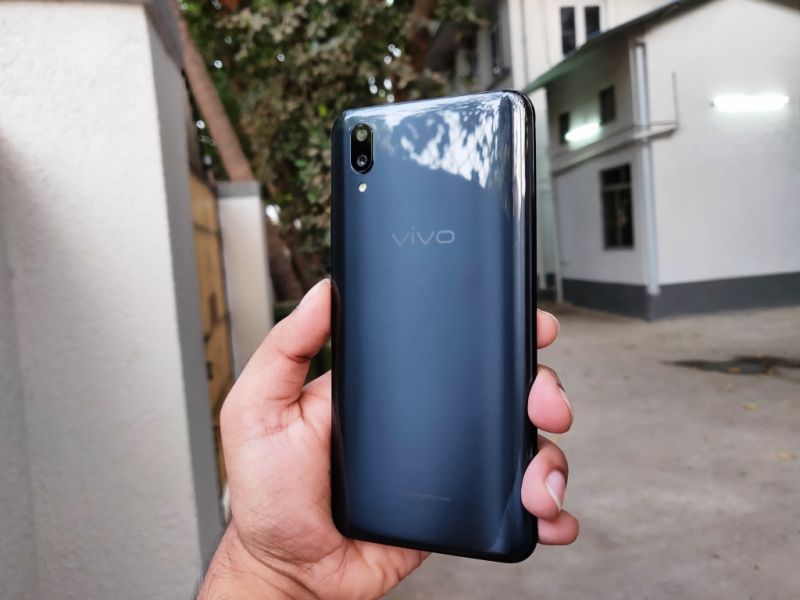
Flip it around and you are greeted with a 3D glass panel. The curvature makes the phone sit comfortably in the palm, aiding a comfortable grip. There’s a dual camera setup stacked vertically to the left (of course, Vivo still takes inspiration from Apple for its design). The metal frame also adorns a glossy finish, which gels in well with the overall theme of the smartphone. A OnePlus 6 similarity here?
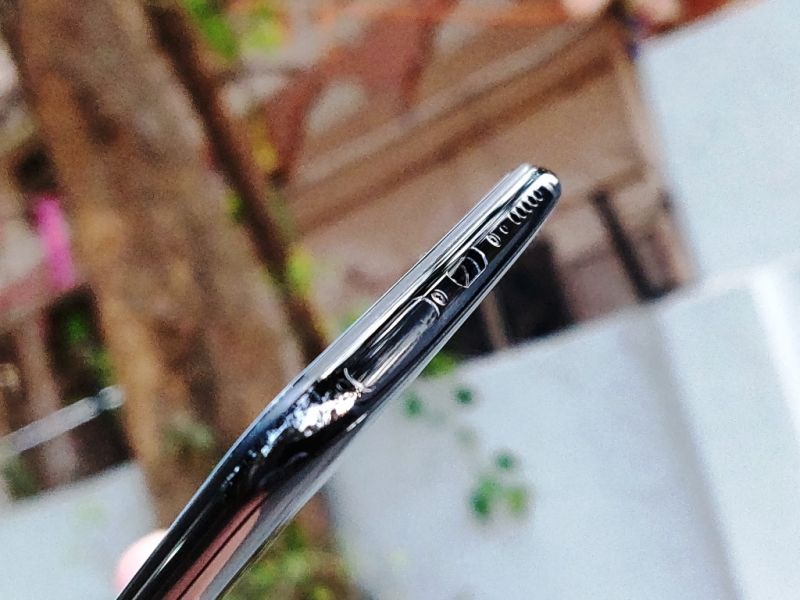
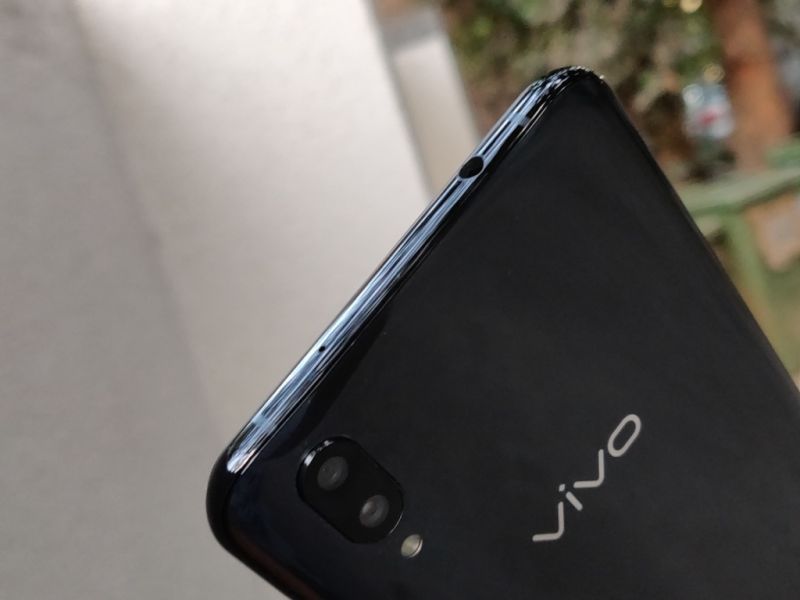
While this is a premium smartphone, Vivo retains some essential features such as the 3.5mm headphone jack (a Hi-Fi DAC inside), which will be good news for those audiophiles who have significantly invested in audio gear utilising the old analogue port. However, it's disappointing to see that Vivo hasn’t shifted to the modern and convenient USB-C port yet and is still offering a micro USB port — we wonder why. Anyways, the port supports fast charging, which is good news for those who have to charge their smartphones frequently.
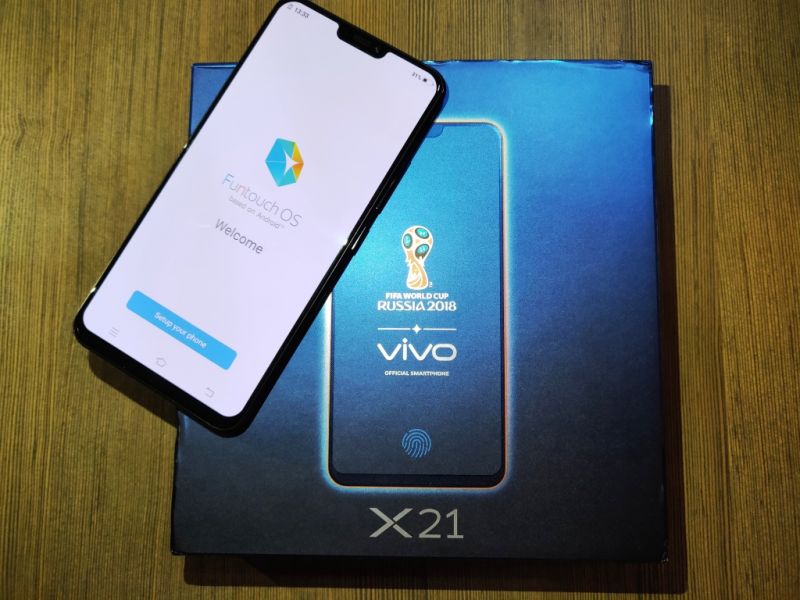
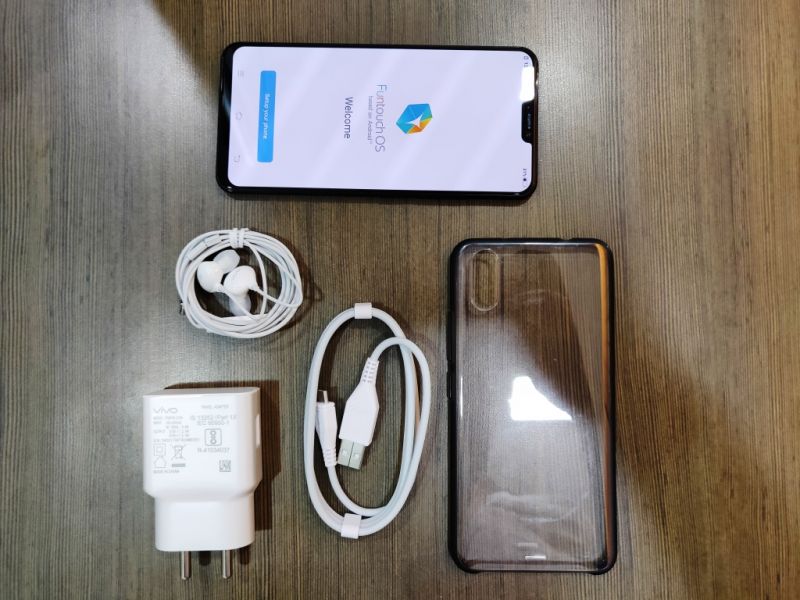
Nonetheless, Vivo impresses with the build, carefully using classy materials for a premium experience.
Display:
The best display panels in the business are AMOLED panels as they offer vibrant contrasts and colours. Vivo has opted for the same on the X21 — the screen measures a huge 6.2-inches in a 19:9 aspect ratio — thanks to the notch. Consuming content on the full HD+ display is a hoot, with eye-popping colours. The colourful UI on the AMOLED display also makes using the X21 an eye-pleasing experience.
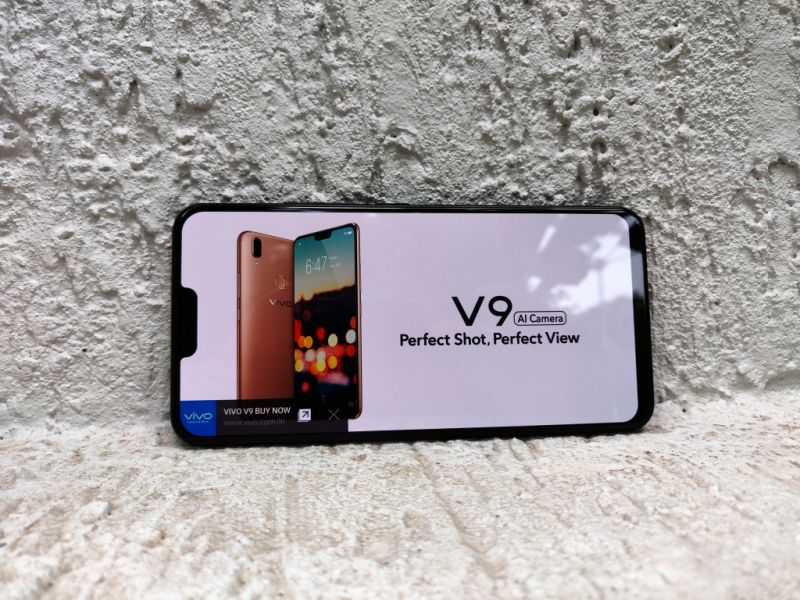
However, Vivo has opted for the AMOLED panel not only to deliver great picture quality, but also for the in-display fingerprint sensor. The in-display fingerprint sensor uses optical technology (and not capacitive) and requires line-of-sight with the finger. Since an OLED panel has space between each LED, the sensor can be placed underneath it to use the gaps between the pixels for reading the fingers’ impression. On the X21, the sensor is limited in size to that of index finger’s impression and is positioned towards the lower half of the display. Occasionally, you would notice the optical sensor in sunlight — a square impression marking the sensor is only visible in extremely broad sunlight.
Performance:
The X21 is Vivo’s flagship offering for the Indian market, which means an expectation for the some of the best internals is pretty obvious. The X21 is built around the Snapdragon 660 chipset with Qualcomm’s custom Kryo cores clocked up to 2.2GHz. Coupled with 6GB of RAM and 128GB of onboard storage, the specs look promising. The icing on the cake is Android 8.1 Oreo looking after the business, albeit with Vivo’s customised Funtouch OS 4.0 on top. However, compared to similarly priced OnePlus 6, it is under-equipped, considering mid-range chipset being used here.
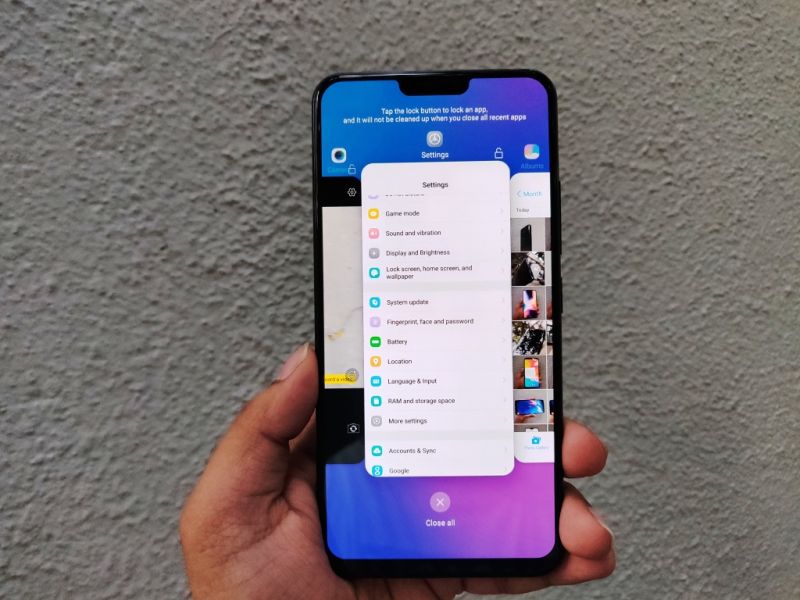
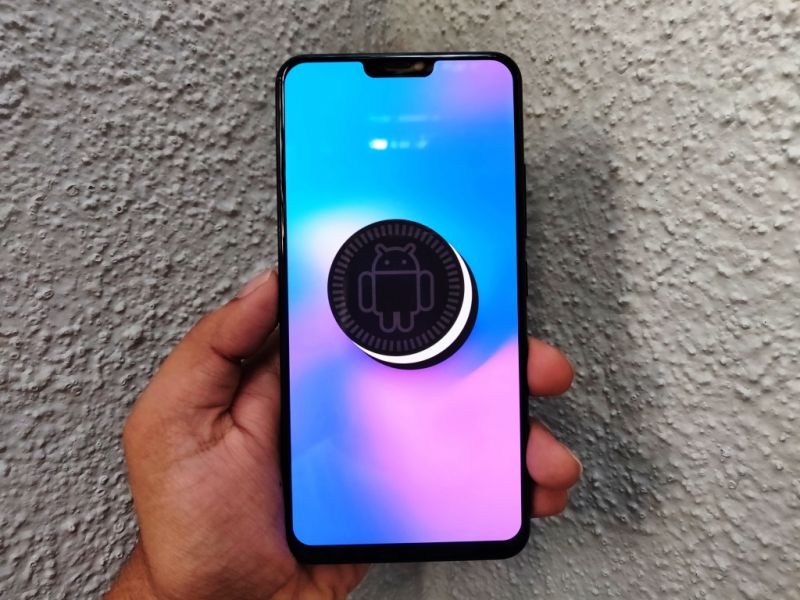
Do note that the Snapdragon 660 was Qualcomm’s 2017 star chipset meant to help the premium midrange Android smartphones. Utilising similar Kryo cores as the flagship SD 835, the chipset delivers when there’s a demand for uninterrupted performance. However, the performance of a smartphone also depends on the amount of optimisation the manufacturer has built into its custom OS. We were happy to see that the Funtouch OS 4.0 has been tastefully optimised for the hardware, despite the massive amount of customisation Vivo has pressed into it. The phone is fast through menus and various interfaces of several apps. We noticed no lags or stutters anywhere when switching between demanding tasks — binge-watching YouTube while addressing quick responses to messages on Facebook Messenger, and somewhat similar scenarios. Even when it comes to demanding games such as PUBG or NFS No Limits, the X21 doesn’t break a sweat. Vivo has baked in gesture navigation, which helps you get rid of the navigation buttons and release more useful space. Therefore, for most of the daily tasks you are likely to encounter on a smartphone, the X21 promises effortless duty. However, there’s one small issue that cannot be overlooked — the OS refinement.

There’s no doubt that Funtouch OS 4.0 is a cheerful interface with lively colours and funky design elements strewn all across the OS. But, it lacks the refinement one expects from a premium smartphone these days. Pretty often, you will notice certain UI elements seem like a half-baked efforts. Most apps don’t often utilise the 19:9 aspect ratio well, thereby leaving the user with black bars on either side. also when you manually adjust the ratio from settings, some of it often flows out of the display. Funtouch OS is heavily inspired by Apple’s iOS, which could be a put off for many Android enthusiasts. Unlike the combined notification shade and the toggles in stock Android, Funtouch OS keep both of them separate — you swipe up from the bottom to access the toggles panel whereas the swipe down from the top to access the notifications. Android Oreo’s instant reply from notifications is missing, along with app icon shortcuts on the home screen.

The focus on providing an iOS interface is so strong that the Settings menu is eerily similar to iOS. You also get apps such as i Music, i Themes, V-AppStore and i Manager — all of which are essentially bloatware made available by Vivo. The company has also thrown in a dozen of software-based features in the UI such as Smart Stay, Smart turn on/off screen, Air Unlock and so on. All of these features seem to be nicked from the Samsung flagships of yesteryears, but they do work effectively, without slowing the system down. Additional possible bloatware added in are PhonePe, NewsPoint, UC Browser, Facebook, WhatsApp, and a few more, which are unnecessary and the user could add it himself if needed.
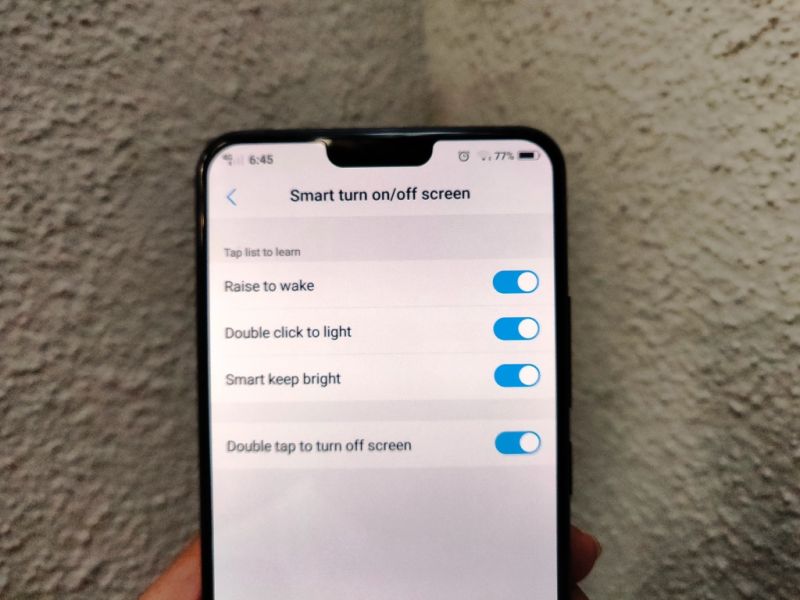
We understand that Vivo wants to appeal to a wider fan base of consumers who like iOS’ design and layout without missing out on the versatility of Android. However, a stock Android-based interface could do wonders for the device. Maybe they should seek assistance from their cousin OnePlus in this regard.
Security twist: The goodness of in-display sensor and face unlock
Despite the impressive performance, the Vivo X21 is all about that in-display fingerprint sensor. As stated, the AMOLED display houses an optical sensor underneath the panel to read and authenticate fingerprints. The sensor is pretty similar to a camera’s CMOS sensor, which uses the light bouncing off from the subject. In this case, the X21 always highlights the patch on the display where the sensor is placed. Once you tap on it, it brightens that patch, throwing as much light possible as it can on the finger's surface. The reflected light carries the pattern of the fingerprint back to the sensor, which is then used to authenticate the unlock request.
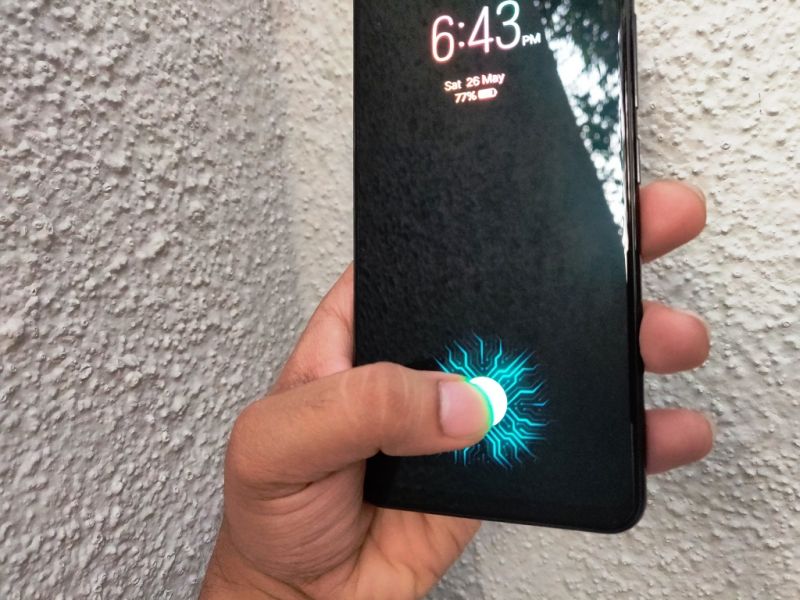
The technology sounds promising, but it’s still a first generation product. Therefore, it’s noticeably slower than the capacitive counterpart one would find in other phones today. The sensor also has other limitations too — the success rate isn’t accurate. many-a-times it does not detect at first try, needs to be firmly pressed down, and cannot be used with wet or dirty fingers. We assume it will better in time.
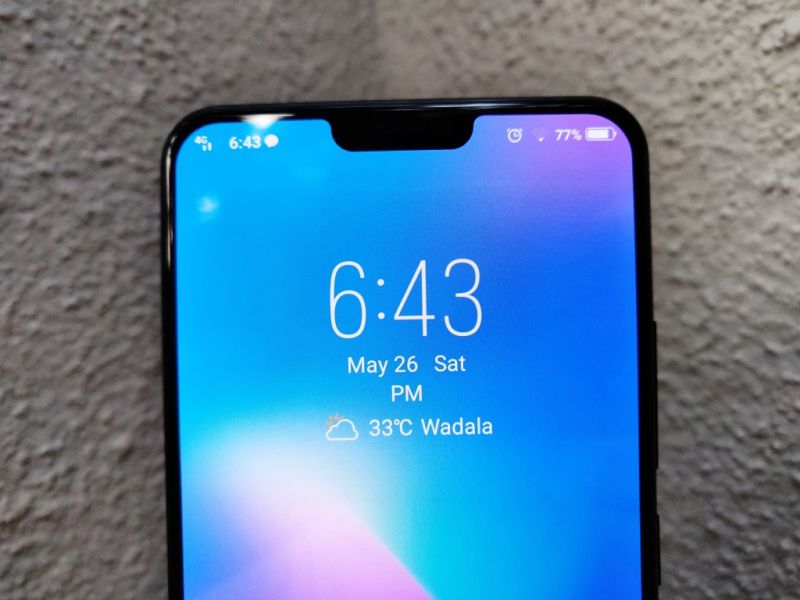
However, the Face Wake facial recognition system is a gem of a biometric verification system. All this time, we have been pretty happy about OnePlus’ Face Unlock system, praising it for its fast response and accuracy. Vivo’s Face Wake takes it a step further by utilising an IR fill light for helping the camera to unlock in dim lit scenarios. The camera can scan faces using 3D depth mapping, which is certainly better than the 2D face unlock system seen on a majority of Android smartphones. The upside to this setup is that it unlocks the phone in an instant, even when there’s not enough ambient lighting. In fact, throughout our time with the X21, we seldom got the opportunity to rely solely on the fingerprint sensor. Vivo should be proud of their Face Wake system and should surely invest more behind it to bring it up to the benchmark. We can safely say that the Vivo X21's face unlocking as fast as the OnePlus, making it one of the only smartphones with the fastest face unlock out there.
Camera:
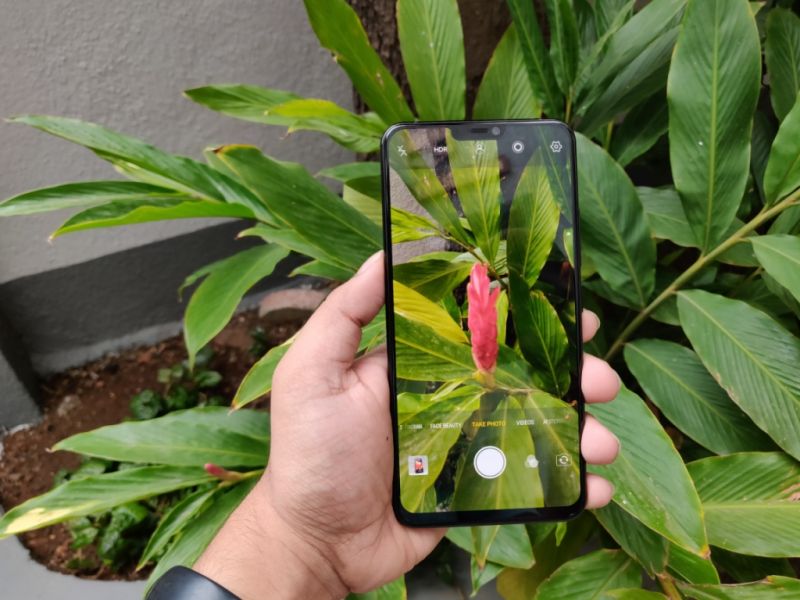
Vivo focuses on camera's performance a lot and the X21 is a shining example of that. To the rear are 12MP + 5MP dual cameras, with the second sensor meant to assist bokeh. The primary sensor has an aperture of f/1.8 and has a 1/2.5-inch sensor, assisted by PDAF. Under broad daylight, the camera performs really well. The photos contain an impressive amount of colours with the right balance of contrasts. The details are well-captured too. However, the end result still cannot match up to Google’s Pixel 2 or Samsung’s S9. With a drop in light, the photos start showing grains, unless you have enough light sources to help the camera even out the irregularities. Details are also lost in such situations.


 Bokeh shot
Bokeh shot


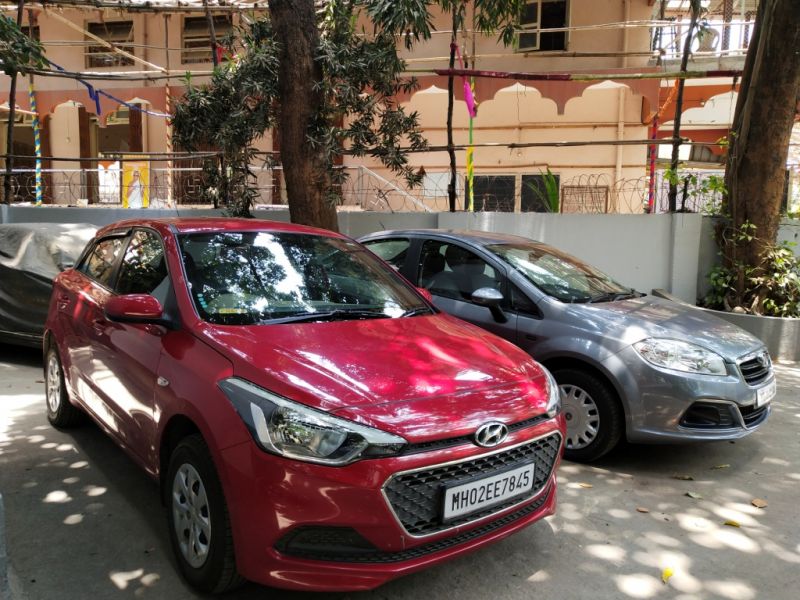

The bokeh effects in portrait photos are good, with a well-managed distinction between the subject and the background. The 12MP front camera is also efficient in snapping good looking selfies, with Vivo’s camera algorithms trying their best to deliver edit-free shots. The camera app offers several AR stickers and iOS-inspired live photos as well, which is certainly not a bad for the shutterbugs looking to update their social media timelines.
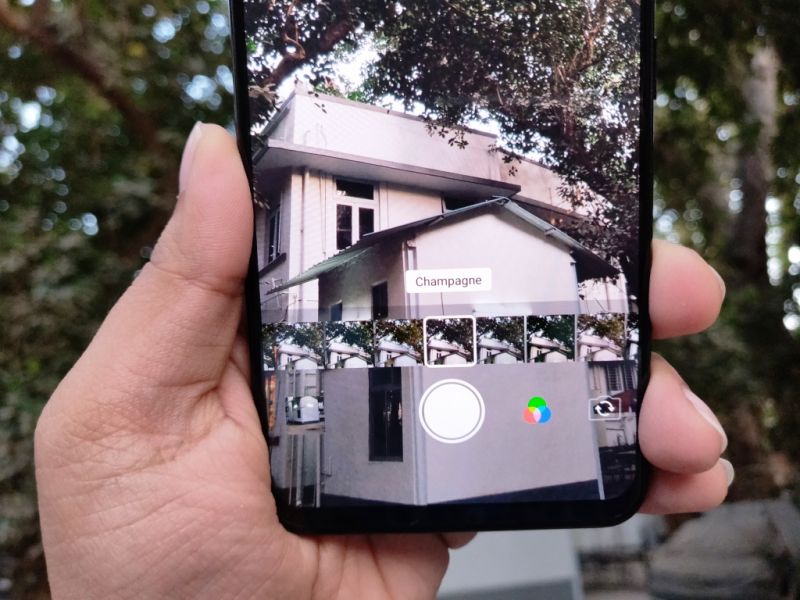
Overall, the X21’s camera is good for casual users, but don’t expect an equivalent of Google-Samsung performance here.
Battery:
While being packed to the brim with one of the latest technological achievements, Vivo’s flagship also impresses us with its battery life. The 3200mAh reservoir manages to stretch out for a day, with 20-30 per cent of juice left. Since it’s a premium smartphone, Vivo has packed in fast charging capability to please the backpackers. The 9V/2A charger topped the battery from 50 per cent in around less than an hour, which was impressive.
Conclusion:
The Vivo X21 is definitely a well-engineered smartphone. The X21 is more than the sum of its gimmicky features, delivering on where it matters for the casual smartphone seeker — aesthetics, performance, camera and battery. There are drawbacks for sure — Though optimised, the OS is unnecessarily complicated and modified, and the presence of a micro USB port irks those who want the latest in their premium smartphone.

However, the biggest drawback with X21 is its price and puts it up right against its mighty cousin — the OnePlus 6, which currently prides itself to be one of the fastest Android smartphones on an affordable price. It also offers flagship specifications with an almost-stock Android UI. Compared to this, the Vivo X21 could only brag about the in-display fingerprint sensor, which is still in its early developmental phase. What pulls down the Vivo from beside the OnePlus is the difference in core chipset performance and operating system gimmicks.
However, the Vivo X21 is a smartphone that will probably bring out the 9-year-old in you. It is a perfect example of what an Android phone can be when the developers are given a free hand. It looks good, has a playful OS with multiple features that most serious performance-oriented phones don’t consider offering, and has all the essentials measured in the right amount you expect from a premium smartphone.
All-in-all, the Vivo X21 is a tough option to recommend, especially when the OnePlus 6 — one of the most powerful smartphones out there, is shockingly close to the same price tag.
Pros: Performance, in-display fingerprint scanner, camera and design.
Cons: Slow fingerprint scan, midrange chipset, bloatware and expensive.
(source)

